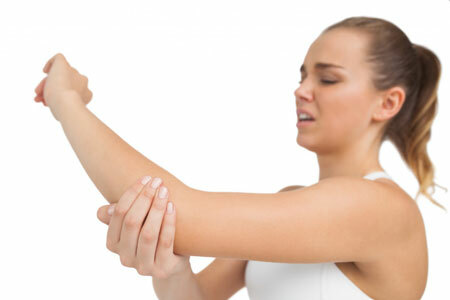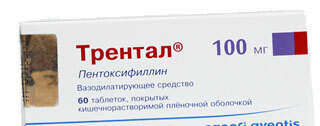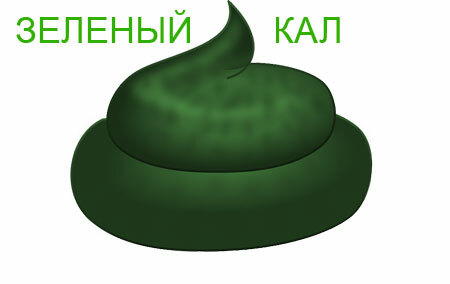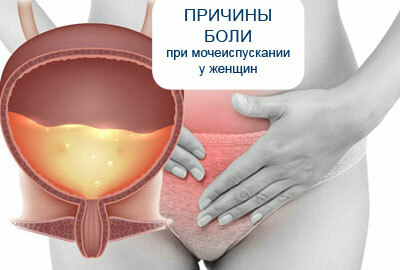Paresthesia - what is it?
The human body is a complex perfectly integrated system that reacts to the slightest changes in the internal and external environment, manifested by a number of signs and pathologies affecting the quality of our life.
One of such signs is called in medicine paresthesia - this is when the left arm, right arm, or other parts of the body grow numb. In addition, paresthesia of the left upper limb is a very difficult condition, accompanied by a sensation of tingling and crawling, it does not appear by itself, but is the primary sign of quite serious diseases.
Contents
- 1 Causes of paresthesia - why does the left arm grow numb?
- 2 Which diseases lead to numbness of the hand and fingers?
- 3 Causes of numbness in the hands of a domestic character
- 4 The treatment of paresthesia - what to do if the left arm grows dumb?
Causes of paresthesia - why does the left arm grow numb?

The genesis of this condition is caused by a violation of skin sensitivity due to radicular irritation or compression of nerve fibers, thereby violating the transmission of nerve impulses.
By localizing the pathological process, you can determine the reason why, for example, the left arm is numb from the shoulder to the very tips of the fingers of the hand.
In addition, this condition may be accompanied by:
- Symptoms of hypalgesia( lowering the sensitivity threshold);
- Skin cyanosis( blue skin), which can be an indicator of a lack of oxygen in the blood and a sign of pathologies of the cardiovascular and respiratory systems;
- Sensation of cold in the hand, evidence of disorders in the circulatory system or disorders of the nervous system;
- A pain symptom in the arm, often indicating a syndrome of myalgic impulse from inflamed and damaged zones.
Many patients note a loss of hand sensitivity during the night sleep or immediately upon awakening. This can be explained by a long stay in an uncomfortable position, causing a violation of blood circulation in the limb. Muscular hypertonicity and disruption of the continuous process of blood circulation can cause numbness of the left arm from elbow to hand, which can not be associated with any disease.
You just need to choose a comfortable orthopedic pillow and the problem to decide by itself. But, here is the loss of sensitivity in the hand, manifested against the background of pathologies of vascular nature or vertebrologic disorders - this is already a problem.
Which diseases lead to numbness of the hand and fingers?

dumbs the little finger on his left hand, photo
The main causative factors that cause signs of paresthesia of the extremities include a number of internal pathologies.
Heart and vascular diseases
Almost 85% of patients feel that the left arm in the little finger and ring finger is numb, is the main indicator of cardiological diseases - acute coronary syndrome, CHF( chronic heart failure), followed by damage to the heart muscle( infarction).
- This may be an ischemic pathology in the form of angina pectoris, with signs that the heart hurts, the left arm is numb, chest discomfort and shortness of breath are noted. The feeling of paresthesia of the hand increases at night, and in the morning hours the symptomatology is manifested by numbness and tingling of the entire surface of the limb from the shoulder to the fingertips. If this symptomatology lasts more than an hour - do not postpone the visit to the doctor.
- If the left or right arm, including fingers, is completely numb in combination with verbal, visual impairments and obstructed movement, a clear sign of a stroke is diagnosed. In this case, if the loss of sensitivity is noted on the left side, this indicates a violation of cerebral circulation in the right hemisphere. Blood circulation disorders in small vessels provoke paresthesia on the left arm and numbness of the fingers
- The combination of symptoms of paresthesia with high blood sugar levels is characteristic of diabetic polyneuropathy, the result of which can become gangrene of the fingers. Acute vascular pathologies caused by atherosclerotic narrowing of the arteries( atherosclerosis) also causes disturbances in the sensitivity of the upper limbs.
In patients over 45 years old, paresthesia of the extremities provoke:
- Thrombosis processes;
- Atherosclerotic process in vascular walls provoked by pathoanatomical changes due to beriberi( deficiency of vitamin "A" and "B");
- The inconsistency of the full blood flow caused by the clamping of the muscles due to nervous overexertion can cause a sensation of numbness in the left arm, little finger and an anonymous finger.
Vertebrologic Diseases
A classic example of a disease that causes loss of sensitivity in the shoulder zone( numbness of the left arm) - shoulder plexitis. It in turn can provoke:
- Pathology of purine metabolism( gout);
- diabetes and alcohol syndrome;
- Injuries and injuries of the shoulder;
- Muscular-ligament ruptures and strains;
- Injury of the wrist and scapula;
- Compression-ischemic neuropathy syndrome( tunnel);
- Cystic neoplasms in the nerve nodes, provoking numbness of the fingers and little finger on the left hand;
- Syndromes - "Reynaud"( ischemia of the hand) and cubital( clamping of the nerves of the elbow).
The development of paresthesia is a common problem in:
- Tendobursis due to articular inflammatory reactions in the shoulder. It is accompanied by a strong pain syndrome in the shoulder region with irradiation into the cervical zone and the shoulder-strap.
- Presence of cervical osteochondrosis, characterized by degenerative processes in the vertebral discs provoking radicular pinching of nerve fibers and causing paresthesia of the limb, pain syndrome during movement of the neck, arms and shoulders.
- Spondylosis of the cervical spine - pathological processes in the spine, caused by bone sprawl on the vertebrae. Paresthesia is accompanied by the occipital pain syndrome, which increases with the slightest movement.
- In stairway muscle syndrome, arterial compression of the brachiocephalic trunk causes radicular irritation of the nerve fibers of the brachial plexus. Muscle tissue is squeezed and pressed against the thoracic vertebrae, causing weakness, tenderness and left paresthesia.
All these factors can safely add neuralgia of the intercostal nerves, intervertebral herniation and supercooling factor. This suggests that the variety of causes completely excludes self-diagnosis and self-treatment, and requires qualified care.
Moreover, when clarifying - the usual living conditions may well be the only provocative factor of the disease, the elimination of which, correct the situation.
Causes of numbness in the arms of a domestic nature

Paresthesia in the left arm can develop for completely different reasons, independent of the pathological processes in the body. May be a consequence:
- Daily, routine work related to manual printing;
- Hand girders( elastic inserts);
- Natural physical fatigue;
- Specificity of the profession( painter, plasterer, embroiderer, etc.);
- Inconvenient bedding, provoking forced long-term position in the night sleep;
- For many hours keeping the limb elevated( shoulder level).
In such situations, the easiest way to get rid of paresthesia is to eliminate the causative factor or periodically massage your hand with massage, rubbing, or gymnastic exercises.
Treatment of paresthesia - what to do if the left arm is numb?

In each case, the problem of loss of hand sensitivity is resolved by doctors - cardiologists, neuropathologists or vertebrologists. You can not dismiss such symptoms, especially those who are prone to cardiovascular disease.
Modern diagnostic techniques will help to quickly identify the causative factor. To identify the cause of appoint:
- MRI examination of the spinal cord / brain;
- Dopplerography of the vessels of the cervical region;
- X-ray examination of all parts of the spine;
- Rheovasography - diagnosis of blood circulation in the hand;
- Electroneuromyography - a comprehensive examination of the neuromuscular system;
- Blood test for toxins.
The plan of therapeutic treatment is made according to the revealed pathology. If it is not found, the course of therapeutic treatment consists of drugs that work positively when the sensitivity is impaired.
The treatment course includes "Trental", "Nicotinic acid", "Paracetam", "Actovegin", vitamin complexes.
For the restoration of sensitivity, physiotherapy techniques are used - magnetotherapy, electrophoresis, dynamic currents and mud therapy.
In pathological processes in the trigeminal nerve zone, in conjunction with physiotherapy, a "Finlepsin" method is prescribed. As a preventive measure, detoxification of the body, compresses to the affected areas and prompt removal of tumors( if detected).
- For the improvement of tissue trophy, preparations and ointments are prescribed - "Adenosine phosphate", "Metiluracil" or "Riboxin", "Vitamin E" and "Solcoseryl"
. A balanced diet that partially or completely eliminates salt intake and provides for inthe composition of the diet of a large number of fruit and vegetable dishes. Refusal of alcoholic beverages and refraining from smoking, will only improve the condition.



